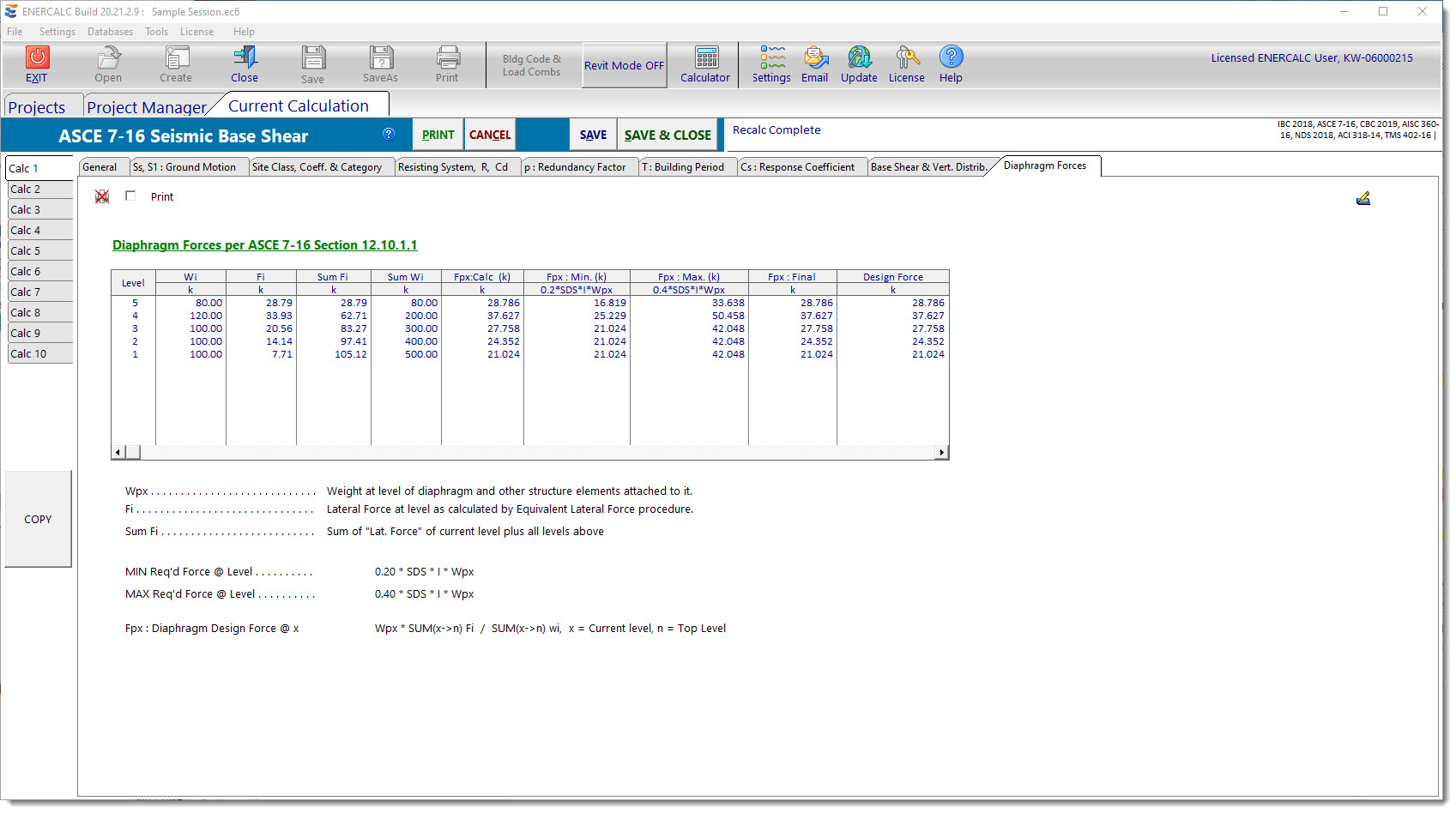This module is a presentation of equivalent lateral force procedure seismic provisions in ASCE 7.
The module currently supports calculations based on ASCE 7-16. All of the references to ASCE 7 are given on the module screens. Above each screen capture are notes as needed to call attention to entries or explain usage.
The module is designed to allow you to work downwards through the tabs on the left side of the screen. ASCE 7 skips all around in its definitions of things to check. This module simplifies the process by properly ordering the items and the necessary decisions to be made in working toward a final seismic base shear value.
The program includes a complete national zip code database and USGS databases of seismic ground motion specifically for use with ASCE 7-16. Using city names or zip codes, you can look up the latitude and longitude of the representative center of the zip code.
The seismic ground motion databases consist of "gridded" values for small increments of latitude and longitude. Given the latitude and longitude for the city or zip code of interest, the surrounding grid data points are located and those seismic ground motion values are used to determine a value for the latitude and longitude of interest. For this reason the values may not match the web-based USGS database values exactly.
General
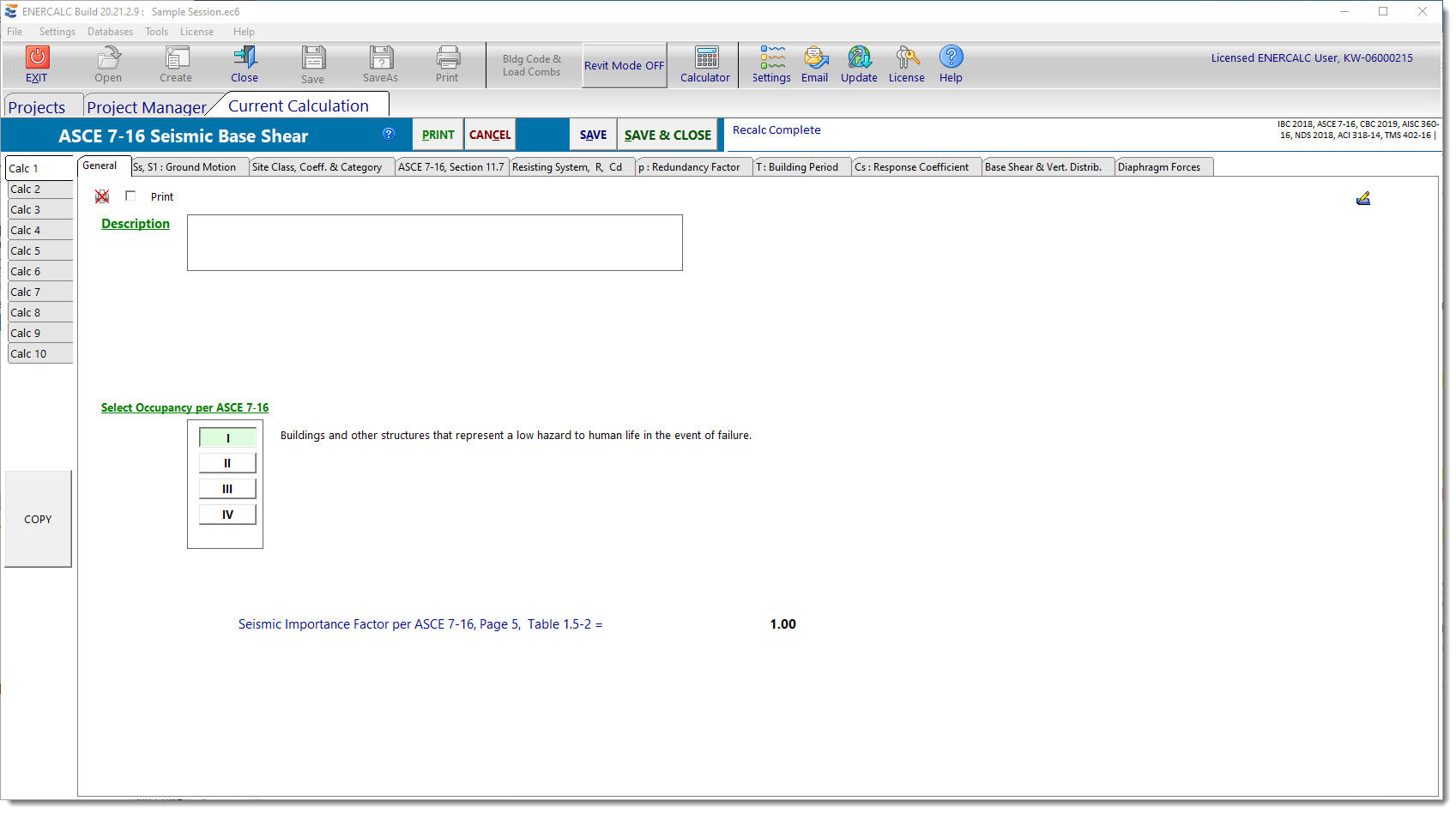
Ss, S1: Ground Motion
Three options are available to specify the SS and S1 values.
Browse City Database
Use the Select State drop-down list box to select the State. Then click one of the City First Letter buttons to have all cities (in the database) listed in the scrolling box on the right. Then simply click on the city to select. Some city names have have multiple zip codes.

Enter SS and S1 Directly
Or, you can enter the SS and S1 values directly.

Enter Latitude & Longitude Directly
Or, you have the option to enter the latitude and longitude for the project location. (Note that longitude is degrees WEST, so do not enter negative values.)

Site Class, Site Coefficients and Seismic Design Category
Select the appropriate Site Class based on the geotechnical conditions.
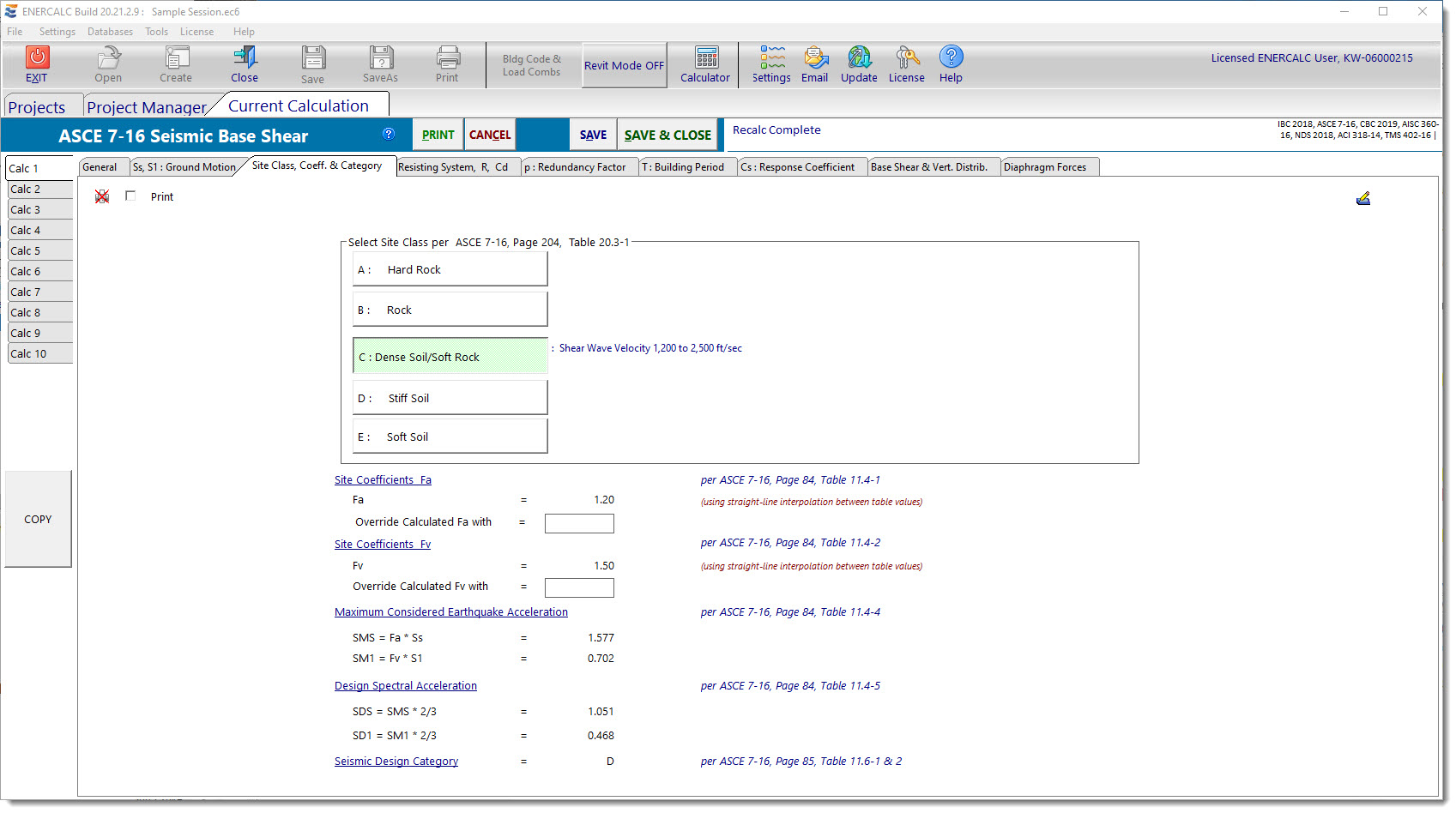
Selection of Seismic Force Resisting System
Click one of the large boxes at the top of the tab to load the table with specific selections for that general category of Seismic Force Resisting System.
Note the checkbox for systems with flexible diaphragms. This may not apply to some building systems...check ASCE for details on the particular system of interest.
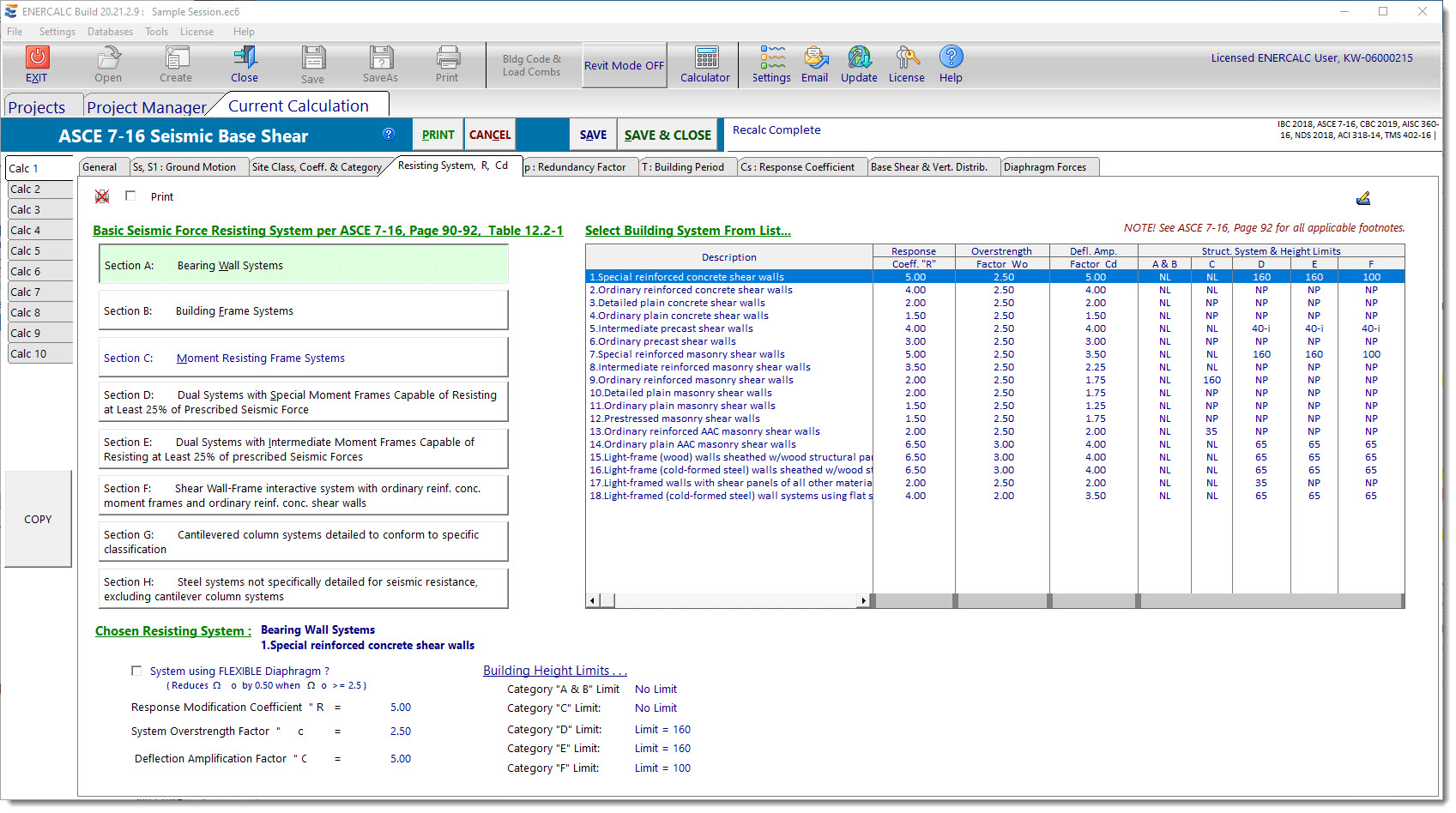
Redundancy Factor
Depending on the Seismic Design Category determined from the prior selections of Occupancy, Seismic Ground Motion and Building System, the Redundancy Factor per ASCE will be shown here.

Specification of Building Period
All four ASCE 7 options for building period determination are available here.

Evaluation of Approximate Building Period
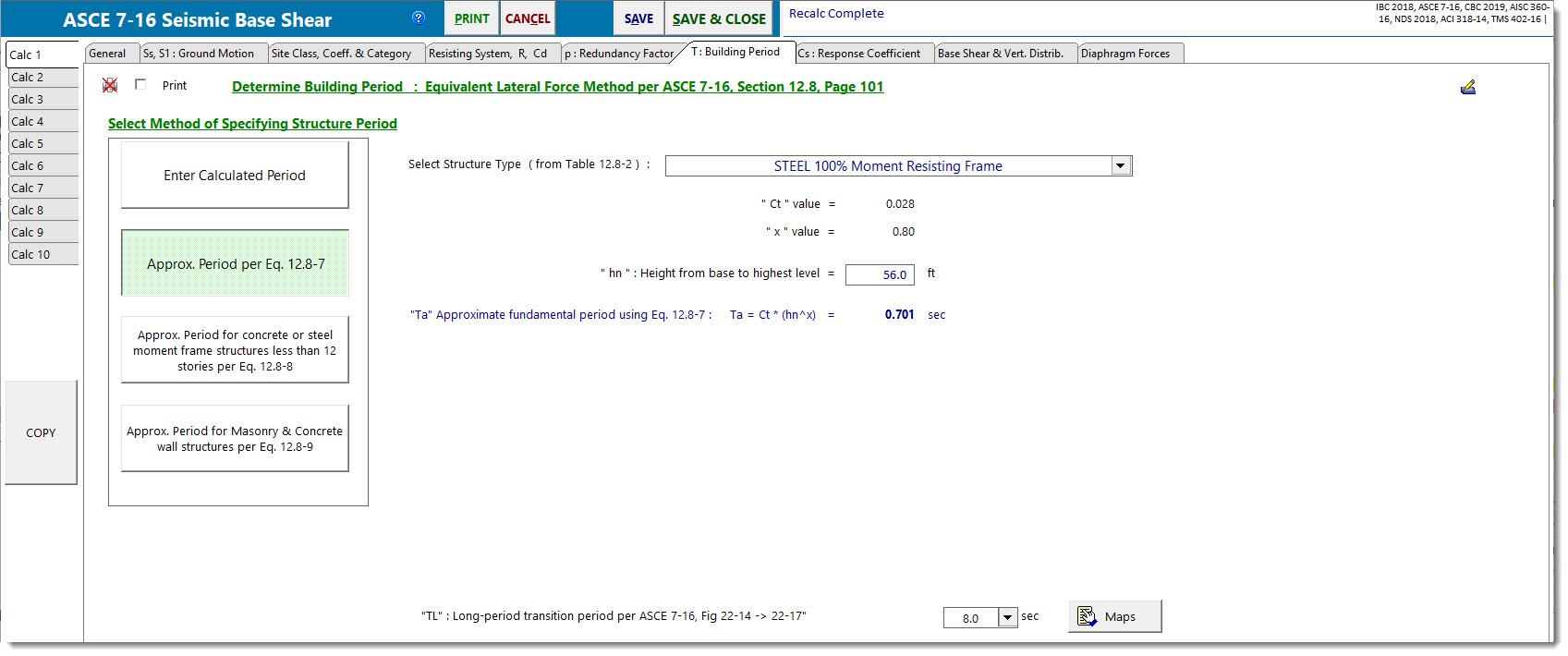
Approximate Period for Steel & Concrete Frames
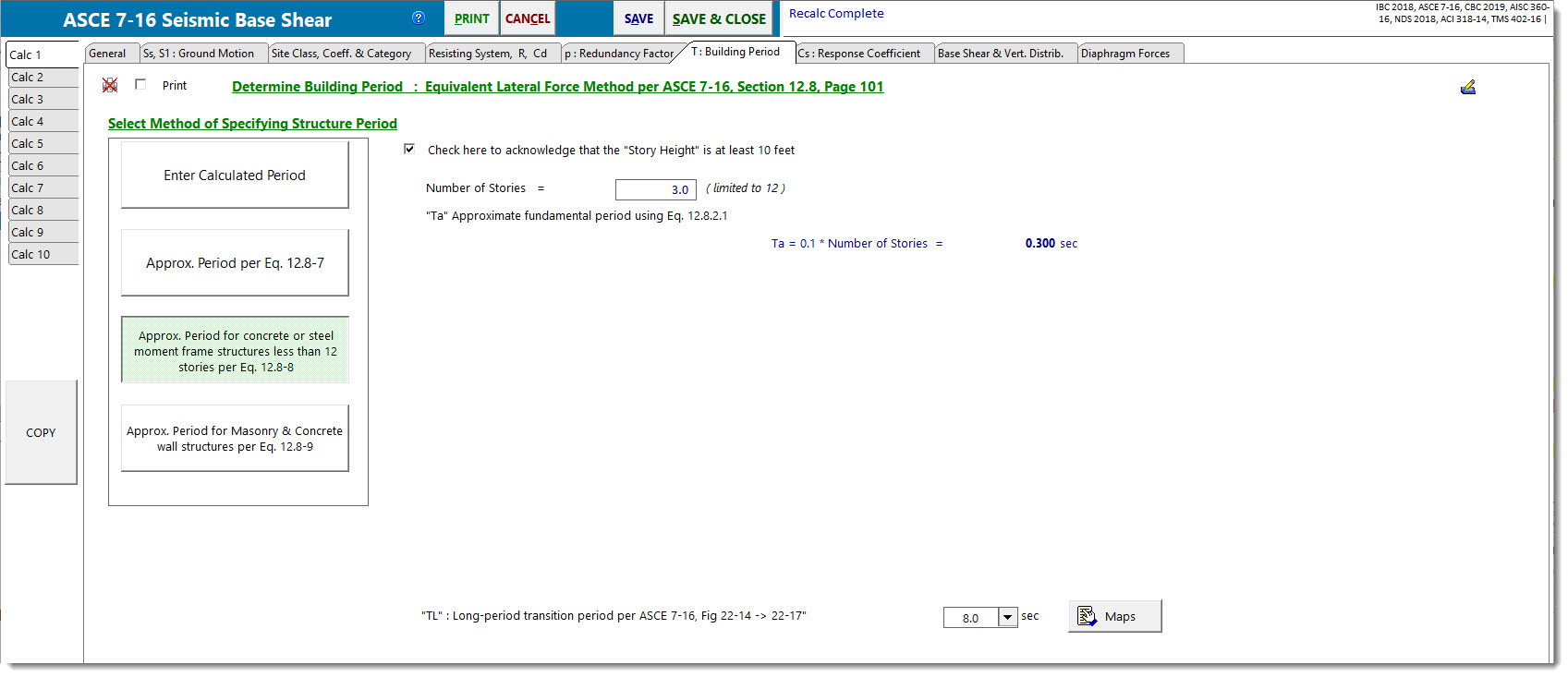
Approximate Period for Concrete or Masonry Shear Wall Structures
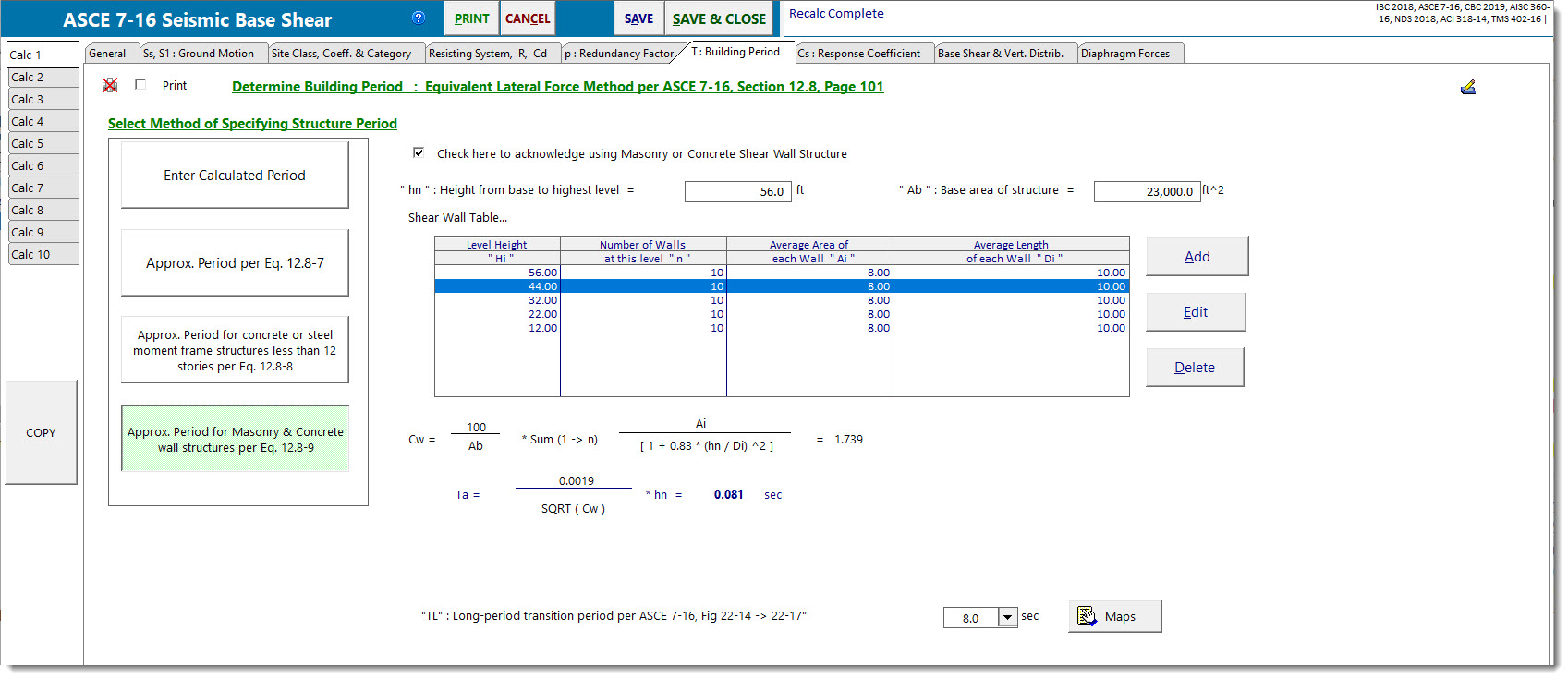
Long-Period Transition Period Reference Maps
Maps copyright ASCE.

Cs: Seismic Response Coefficient
Please check ASCE 7 section references for details.
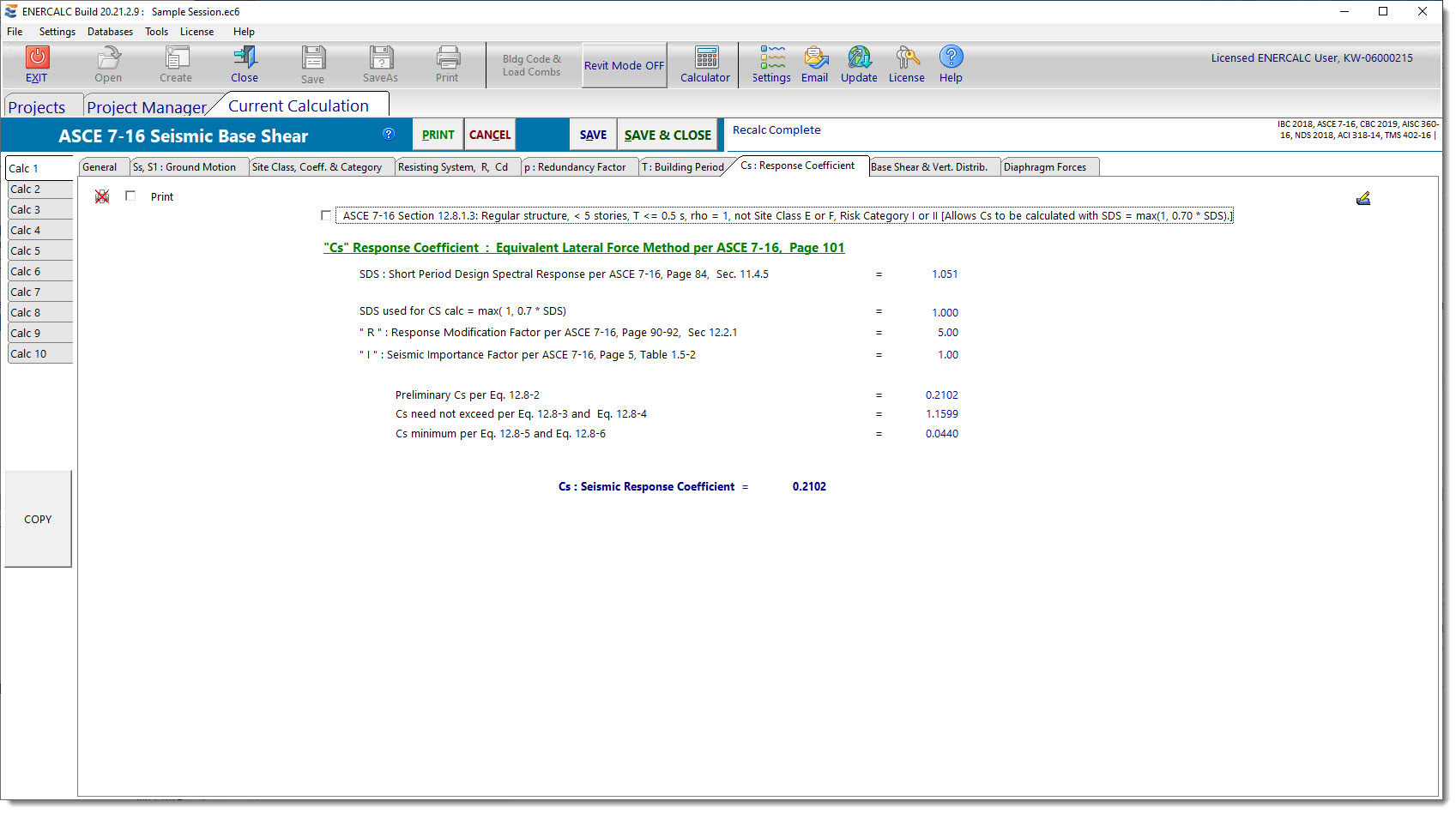
Vertical Distribution of Base Shear
This tab calculates the vertical distribution of seismic forces. Use the [Add] button for each new level. To edit information for a level, highlight the corresponding line and click [Edit].
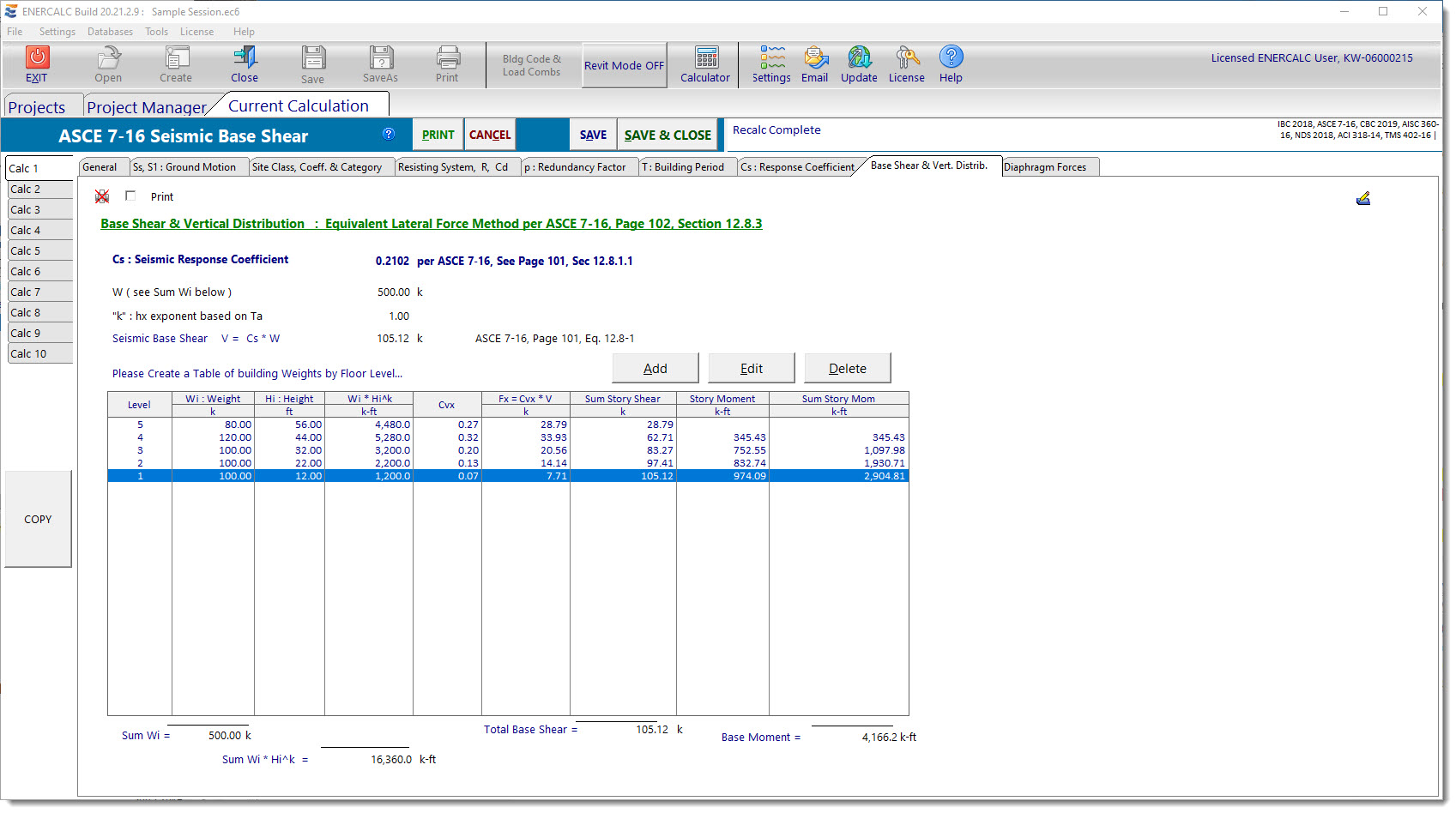
Diaphragm Forces
Using the information entered above (on the prior tab) the force distribution results are shown here.
